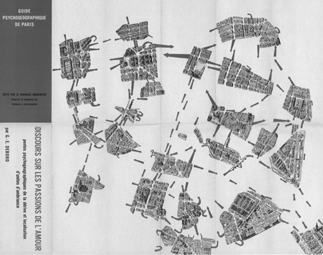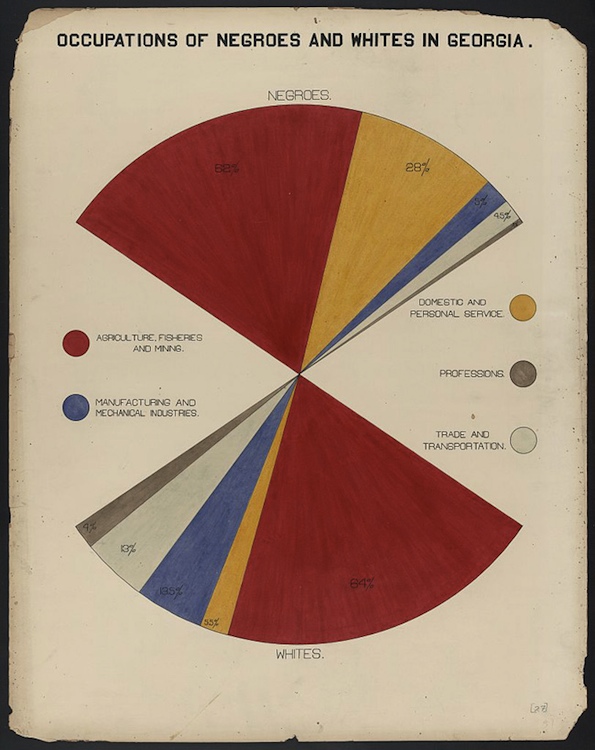Door: Guy Debord.
“Debord’s Psychogeographical Guide to Paris (1957), a fold- out map subtitled ‘Discourse on the passions of love: psychogeographic descents of drifting and localisation of ambient unities’, is highly suggestive for considering the instructional character of SI activities. The city is shown as fragmented, joined by blank areas indicated only by the flow of red arrows. It is not a record or report of a state of affairs, nor does it have a function: the map is unquestionably hopeless as a guide to Paris, but also as a guide to understanding Debord’s own subjective responses to the city. (In this, it differs from the Surrealist group’s Map of the World, 1929, in which certain countries are vastly enlarged while others vanish altogether, corresponding to their status in the Surrealist imaginary.) Like Debord’s map of Parisian ‘unités d’ambiance’ dated January 1957, in which particular districts are circled and shaded, his Psychogeographical Guide to Paris shows a form of notation that is significant less as a record than as a trigger for us to ponder our own sensitivities to the urban environment. It suggests a method or tool, or – following Ivan Chtcheglov’s psychoanalytic reading – a technique.”




